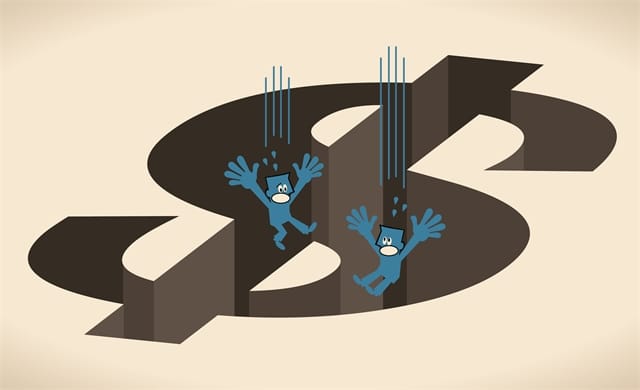Anger and dismay greeted the March 10 announcement that the Wounded Warrior Project (WWP), a nonprofit that helps wounded veterans, fired its top staff. So many Americans gave their trust and donated their money to this nonprofit – to the tune of over $372 million in 2015. The WWP’s marketing convinced donors to part with their hard-earned dollars because of emotionally compelling stories about how they could help wounded veterans.
However, investigations revealed that the organization spent millions of donor dollars on first-class airfare, employee retreats, and extravagant salaries. The programs it did create for veterans served more as showpieces useful for marketing than addressing the actual needs of veterans.
How nonprofit scandals hurt good charities
Why do the misdeeds of one nonprofit cause mistrust of all nonprofits? Well, the problem is the “horns effect,” one of the many thinking errors that are a consequence of how our brains are structured. When we dislike one member of a group, our dislike spills over to other members of that group, even if there's no good reason to think badly of them. The horns effect around WWP will inevitably reduce trust in nonprofits as a whole, including very effective ones.
Such unjustified distrust of high-quality nonprofits undermines our society. The nonprofit sector provides social services that governments can’t or won’t provide, ranging from food and shelter for the poor, to higher education to support for wounded veterans. To continue getting these social needs and address the distrust caused by nonprofit scandals, we need to improve our nonprofit sector.
How donors can prevent the next charity fiasco
Each of us can make a difference by combining the impulses of giving from the heart with the direction of the head to become a more effective donor. The easiest way to do this is to take the perspective of a savvy investor and research your donation options to make sure you do the most good per dollar donated.
You can do your part by pressuring nonprofits to be transparent about its activities and finances, and measure the impact of its work well. Doing so would prevent future WWP fiascos. If donors knew about the inflated salaries, outlandish spending, and lack of real impact, WWP would never have received $372 million in 2015.
As part of your focus on measurement, give numbers priority over emotionally compelling stories. Let your heart be open to stories when you are considering whether to give, but also ask how representative these stories are of actual clients. Then, multiply the typical stories by the actual impact, as measured in numbers of clients or other relevant metrics. This helps prevent another common thinking error called scope neglect, in which our brain fails to ensure that our emotions correspond to the actual impact made by our donations.
This may sound like a bit more work than you are used to, but think about what you’re giving up by not paying attention to the numbers. You don’t get to have trust in the nonprofits that you support and take the chance of experiencing the anger and dismay experienced by donors to the WWP. Moreover, following this course will benefit our society by pushing nonprofits both to be more transparent and to measure the impact of their work well.
Resources for donors
Fortunately, you do not have to do all this work yourself. Recently, a social movement called effective altruism has been pushing the nonprofit sector to become more transparent and measure its impact. Several organizations, such as The Life You Can Save and GiveWell, provide information to donors about the impact of various charities addressing global poverty. Some of their top picks include the Against Malaria Foundation, which protects families in the developing world against deadly malaria-carrying mosquitoes, and GiveDirectly, which transfers money directly to some of the poorest people in the world. Another organization, Animal Charity Evaluators, gives recommendations on the most effective charities to prevent animal suffering.
Crucially, these evaluative organizations, called meta-charities, do not receive any funding from organizations they are evaluating. Instead, meta-charities receive funding from donors who appreciate the services these organizations provide, allowing meta-charities to stay objective. With time and support from donors, new meta-charities will arise to evaluate other areas of nonprofit activity.
We all have the power to prevent future WWP scandals and improve our society. We can be effective donors by adopting the attitude of savvy investors, and not only encourage our favorite nonprofits to be more transparent and accurately measure their impact, but also ensure that we can truly trust that nonprofit to spend our money wisely.
This piece was first published in Time Magazine.



